Hello friends!
Finally back to base, unpacked and back in the regular grind-mill. The hangover of the vacation is not over yet, and the festive season isn’t helping. Someone very wise has said: “No one needs a vacation more than the person who has just had one.” Give him/her an award, I say. Truer words have never been spoken. Nevertheless, life awaits and somebody has got to go live my life, so I guess it’s convenient to all if that person is me 😛
The plants in my absence were very ably taken care of by my husband and are as hale and hearty as I’d left them. The two weeks that under a negligent caretaker would have killed my plants, have seen them thrive under the care of my attentive caretaker (Well done, you). This prompted me to think about those who aren’t lucky enough to have this back up arrangement. You may be in a job that calls for frequent travel or may be basically a negligent gardener. By “negligent” I mean those who forget to water their plants and fertilising or pruning are words they’ve never heard even in dreams. If you are one of them, read on 🙂
If you have managed to successfully kill every plant you’ve owned, or have a track record of forgetting to water your plants and compensating on weekends (thereby first starving and then flooding them); this may be a good time to stop. May be you should give up trying to improve yourself or pushing your luck and finally try to find some plants that can handle negligence well 🙂
Mentioned below is a list of five types of plants that are hardy and will be perfect for the negligent gardener:
Please click on the images to enlarge them.
All images taken from the web have their source mentioned, the rest were all taken by me of my own plants.
Succulents:
“Succulent” is an adjective meaning “fleshy”. That is exactly what these plants are. Succulents are a group of plants which have thick juicy fleshy leaves. These plants are basically from hot and dry lands and hence have fleshy stems and leaves to store water for the use of the plants. Plants such as Aloe Vera and even Cacti belong to this category. Succulents can handle dry periods very well, and if you’re the type that waters once a week, succulents are a blessing for you.
Not only are they hardy, they come in stunning colours and hundreds of varieties. Check out some of them here:
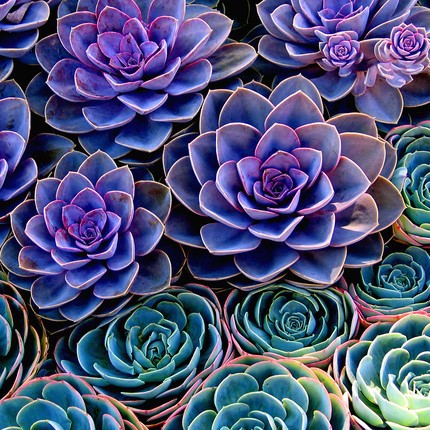
https://www.tumblr.com/search/purple%20succulents%20plants
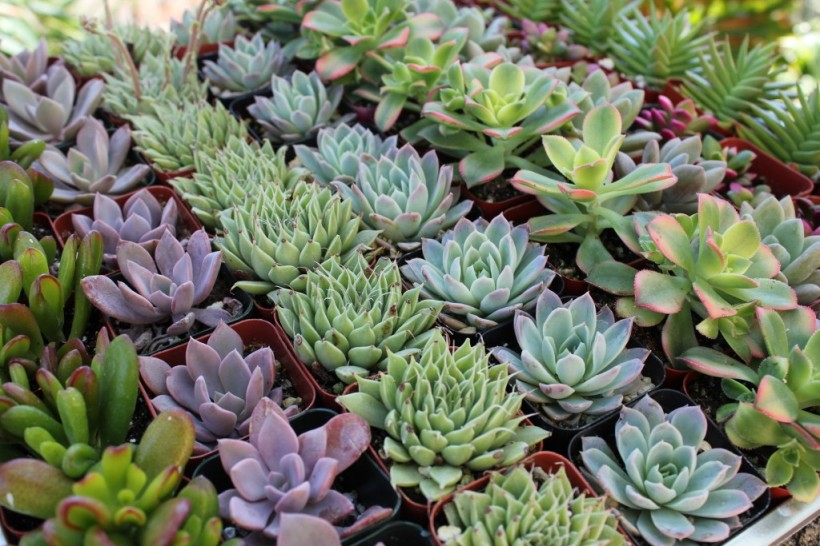
http://thesucculentsource.com/
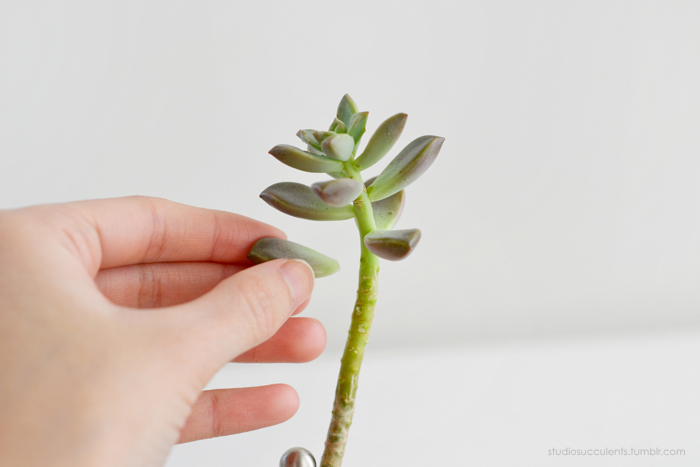
http://studioplants.tumblr.com/post/82995525990/propagating-succulent-by-leaf-cuttings-and
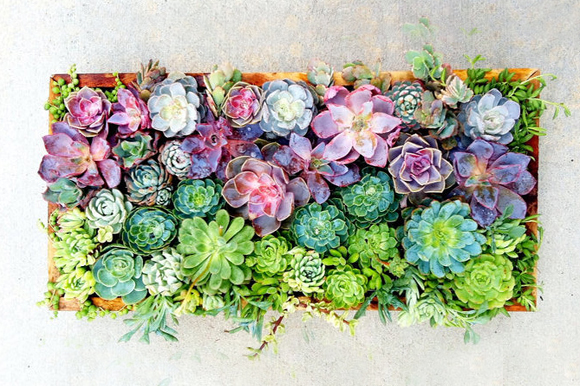
http://weheartit.com/entry/group/22458970
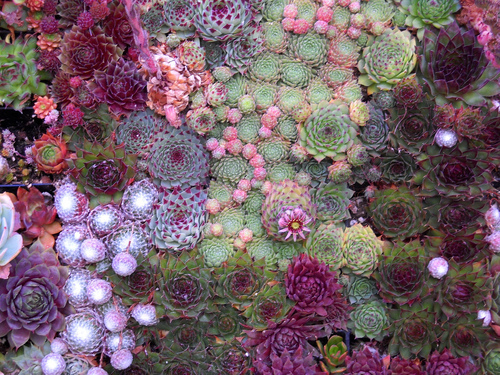
http://wallacegardens.tumblr.com/post/5907738346/i-never-tire-of-the-amazing-combinations-and
The worst thing you can do to a succulent is overwater it. So if you belong to the “oops forgot to water again” category, rejoice! Go and get some succulents; some of these are as pretty as flowers! They also make ideal indoor plants, provided they get some sun. Revel in the beauty of these plants without putting in half the effort of a regular plant 🙂
Palms:
Palms are another category of plants that, even in low water conditions, survive and thrive very well. They are naturally found in semi-arid landscapes. No water won’t cut it though, they have regular leaves and not succulent-like water storing leaves. They need to be watered a bit more frequently than succulents, about once in 2-3 days in the worst case.
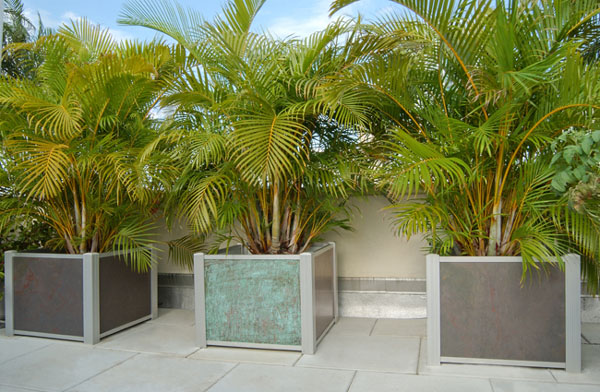
http://planterblog.com/blog/?tag=concrete-planters
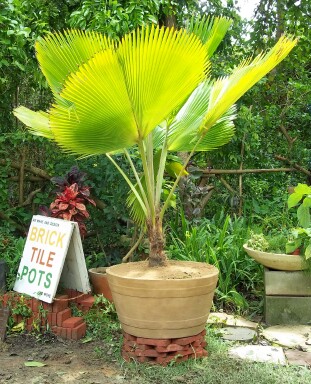
http://taylorstudiosvi.com/pots_orchid_pots_and_fountains
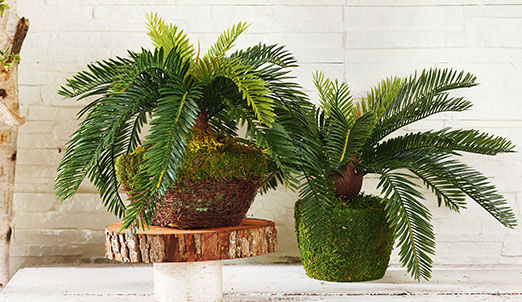
http://taylorstudiosvi.com/pots_orchid_pots_and_fountains
Try to keep them away from direct sun in the harshest of the Indian Summers, where temperatures soar above 45 degree Celsius. For the rest of the year, the sun is a good friend 🙂


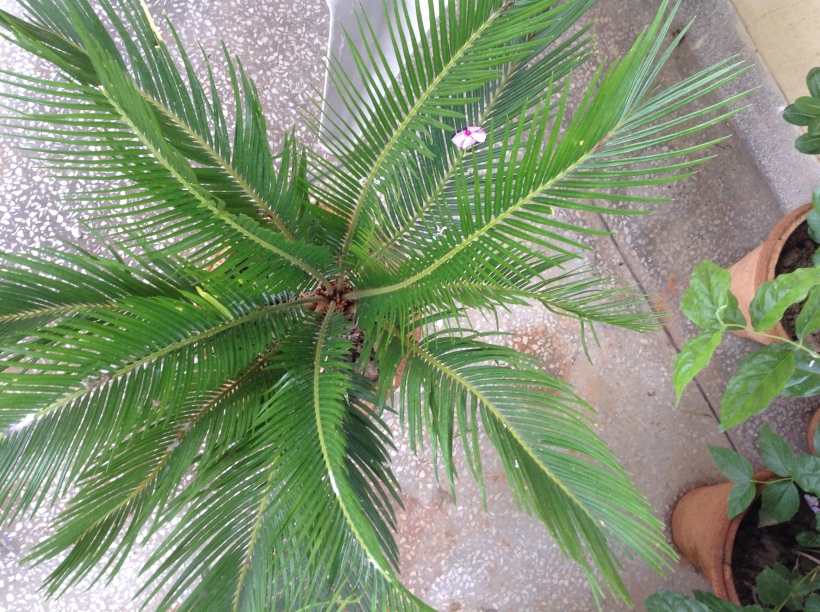

Palms are actually trees, so they should ideally be planted in the ground. However, if you, like me, do not have a yard and want them anyway, you can plant them in pots. Make sure that they have large pots since they have deep reaching roots. Being semi-arid region plants they have to reach deep underground to soak up water. Keep upgrading them to larger pots once they seem considerably larger than when you last potted them.
Water your palms once in two days when in sun and once in three days if in shade. Like succulents, palms make great indoor plants, but they need some sun too. So place them near a sunny window and enhance the beauty of your home 🙂
Bougainvillea:
Bougainvilleas are plants found almost everywhere. If you’re in India, chances are that you have grown up surrounded by them. They are some of the easiest to grow and manage and most profusely flowering plants there are. While they aren’t creepers, their tender shoots can be trained to climb on walls, railings or arches.
Almost all of you that read my blog are familiar with my struggles with my Bougainvilleas. However, as I mentioned in this post, I learned that all I needed was patience. Now my Bougainvilleas are flowering and look oh so beautiful!
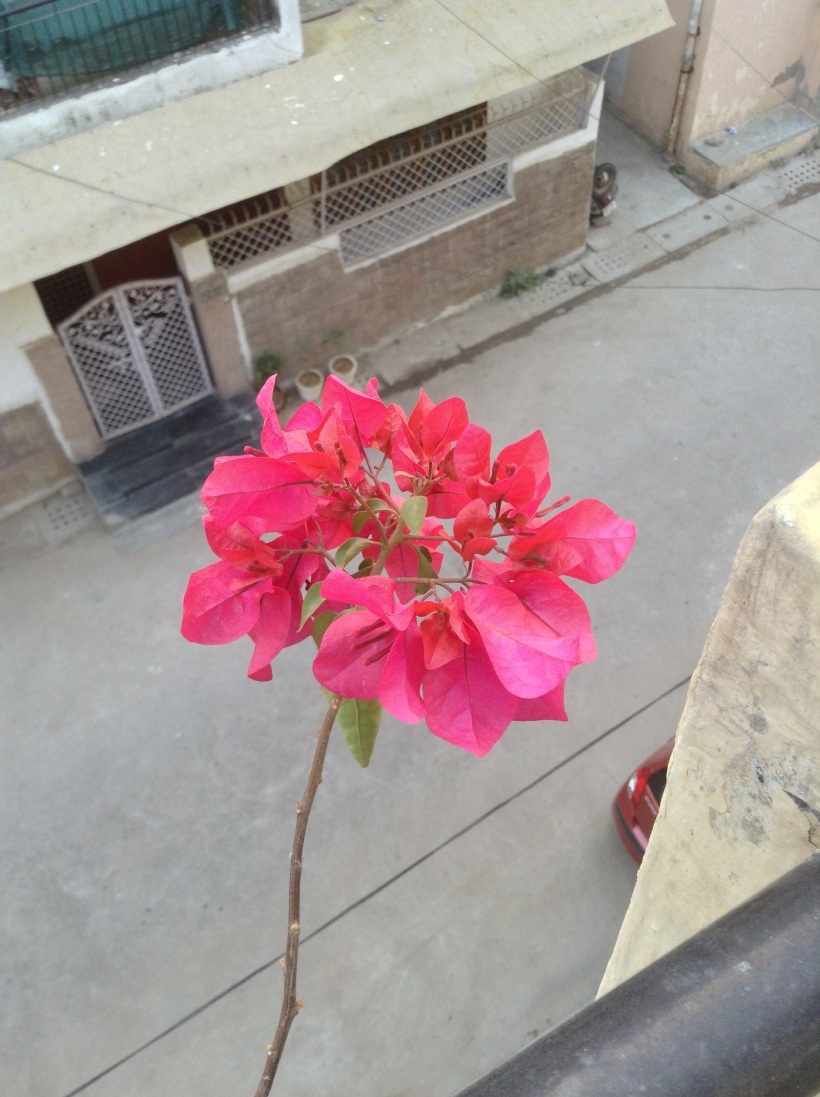

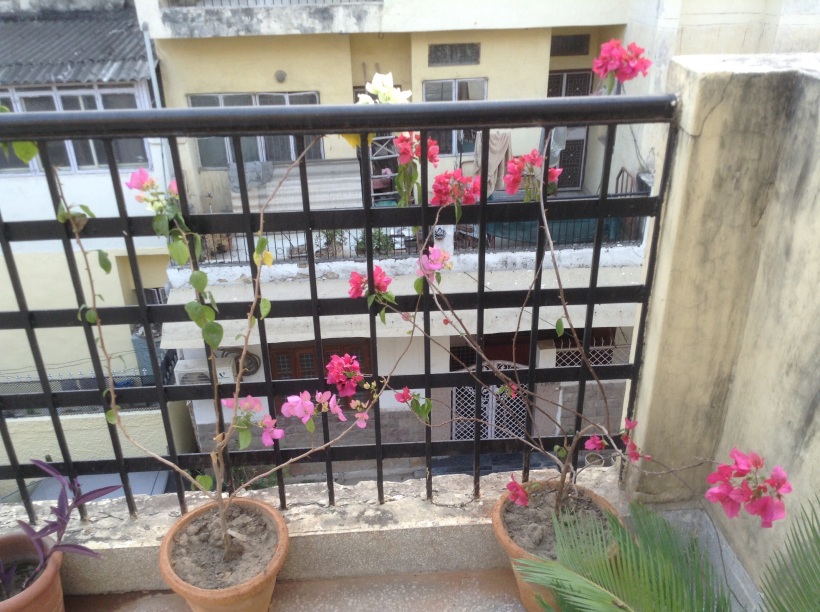
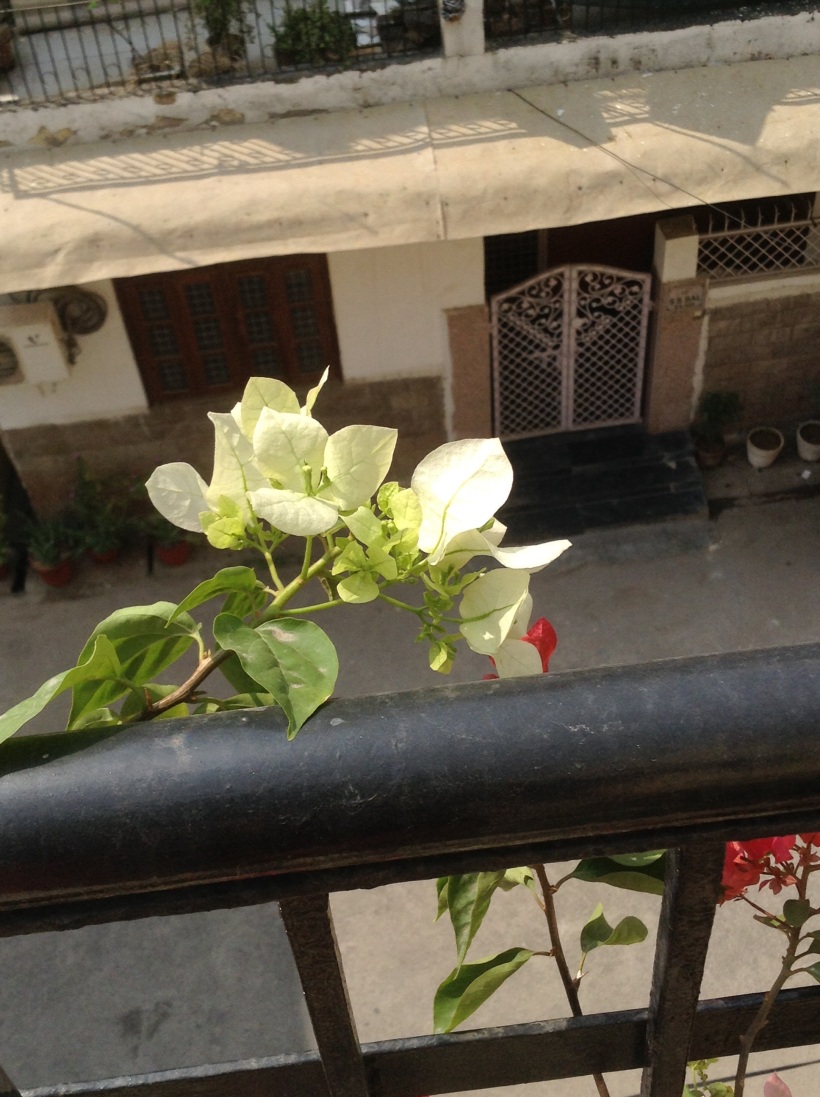
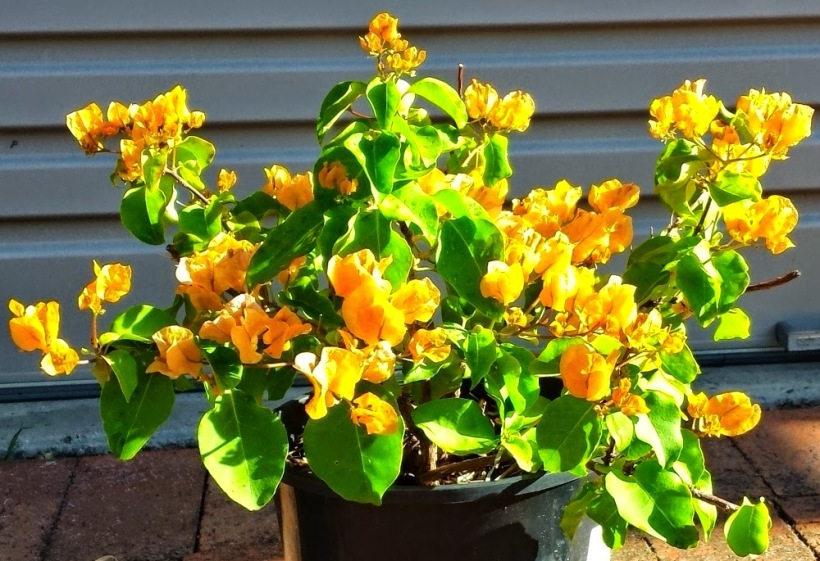
http://wallpaper222.com/explore/bougainvillea-in-pots-care/
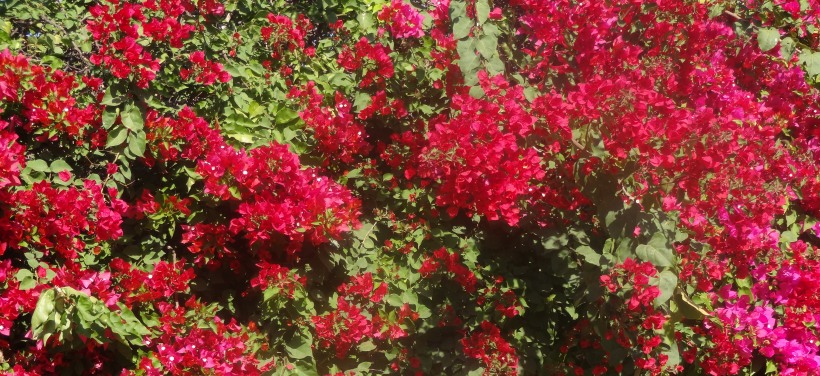
Bougainvilleas need very little water and full sun in order to start flowering. Since comfortable watering prompts them to grow foliage, scant watering is actually helpful in pushing them to bloom. The recipe to get the crazy blooms to erupt is to plant them in a large pot, keep them in full sun, water then twice a week and wait. You will not be disappointed!
Vinca:
Vinca or Periwinkle, also known as Sadabahar in India. The word Sadabahar can be broken into Sada meaning “always” and Bahar meaning “spring”; alluding to a plant which flowers throughout the year.
If there is one plant that can be said to be found even more abundantly than Bougainvillea in India, it is Sadabahar. You will find it literally everywhere. It is one of the plants with the best ROI (Return On Investment) for a gardener because it needs almost no maintenance, grows very fast and flowers madly – all the time.
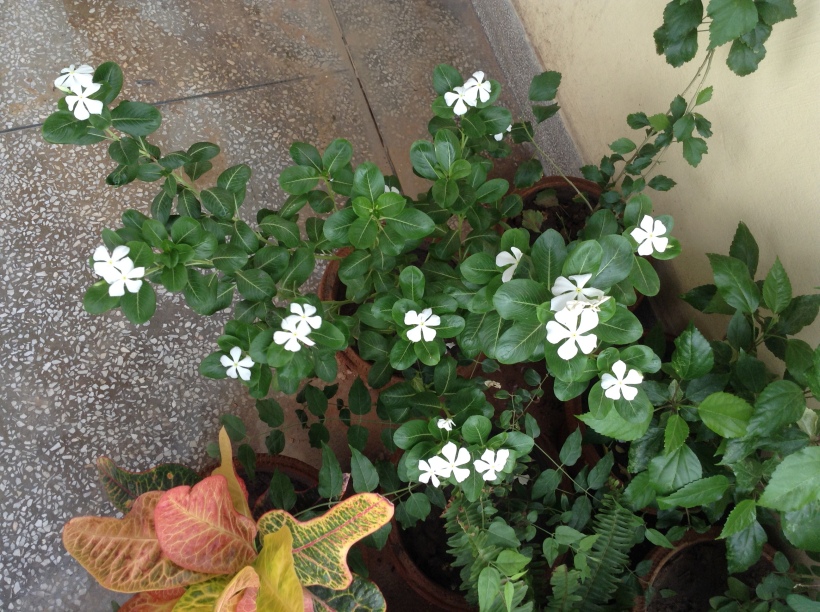

There is hardly a day since I brought these two home that they aren’t laden with flowers. All that is needed for maintenance is watering them every alternate day. Even if you forget to water them a couple of times, they won’t die. When I went away for ten days, I watered them once and left them as mentioned in this post. They were alive and well even after ten days!
I have never seen another plant that communicates its needs so well. If they are dehydrated, their leaves droop and if they need nourishment, their flowers gradually become smaller. Just water them and throw a batch of your used tea leaves in them in the above cases respectively; and watch them respond within a day!
All this prompted me to buy more of them in different colours. Who doesn’t want an ideal plant like this? I want them in every colour and hence the moment I saw these in the nursery yesterday, I grabbed them 🙂 I still have to repot them properly though, all of them need to be moved to proper homes with more room for their roots.
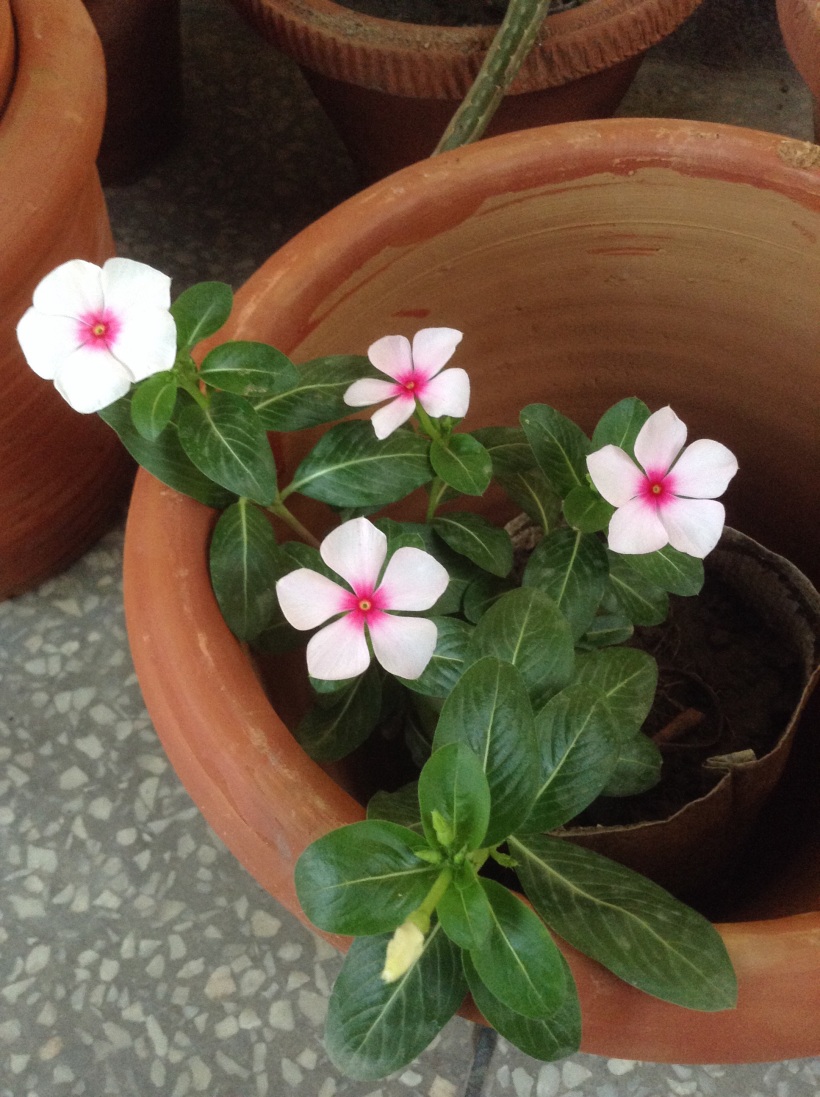
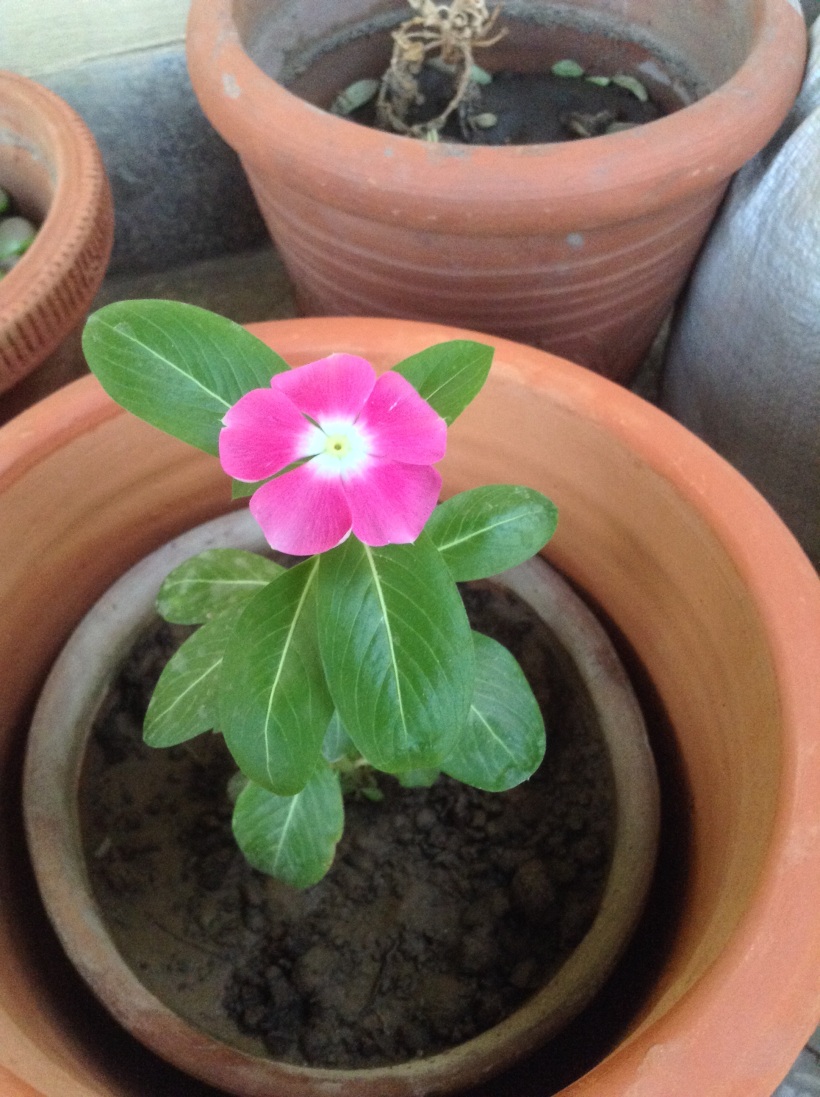
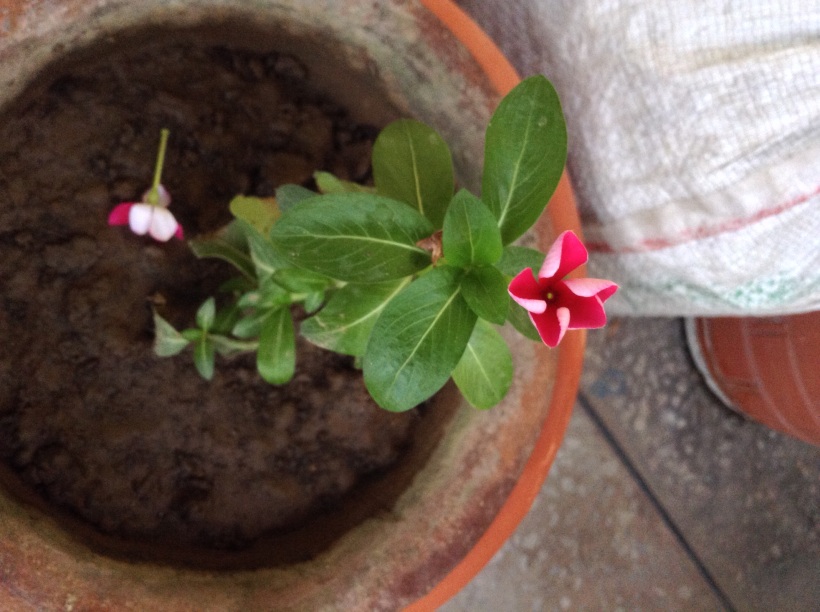
Go and buy Sadabahar plants for your balcony/garden. Hunt them in every colour possible. They are the best candidates to put your money on. Once you accomplish that, just sit back and watch them fill your balcony with colours!
Money Plant/Pothos:
Pothos, often known as Money Plant in India, is another very commonly found plant. It is considered lucky in India and is found in most homes. The name “Money Plant” implies that the household will be prosperous and never be short of, well, money.
It is one of the most low maintenance plants I’ve ever seen. Whether you grow it in a pot with a moss stick or even in a bottle of water, it obliges by growing steadily. You can overwater it or underwater it, it never complains. It needs zero maintenance if you’re growing it in the ground. If you’re growing it in a pot, the best way is to give it the support of a moss stick but there’s no wrong way to grow it.
It’s a creeper, so it can easily be trained to climb any structure. If you don’t train it, it’ll climb something or the other on its own, so it’s better to train it 😛 It has auxilliary roots coming throughout its stem or body and hence it sticks really well to whichever structure it adheres to.
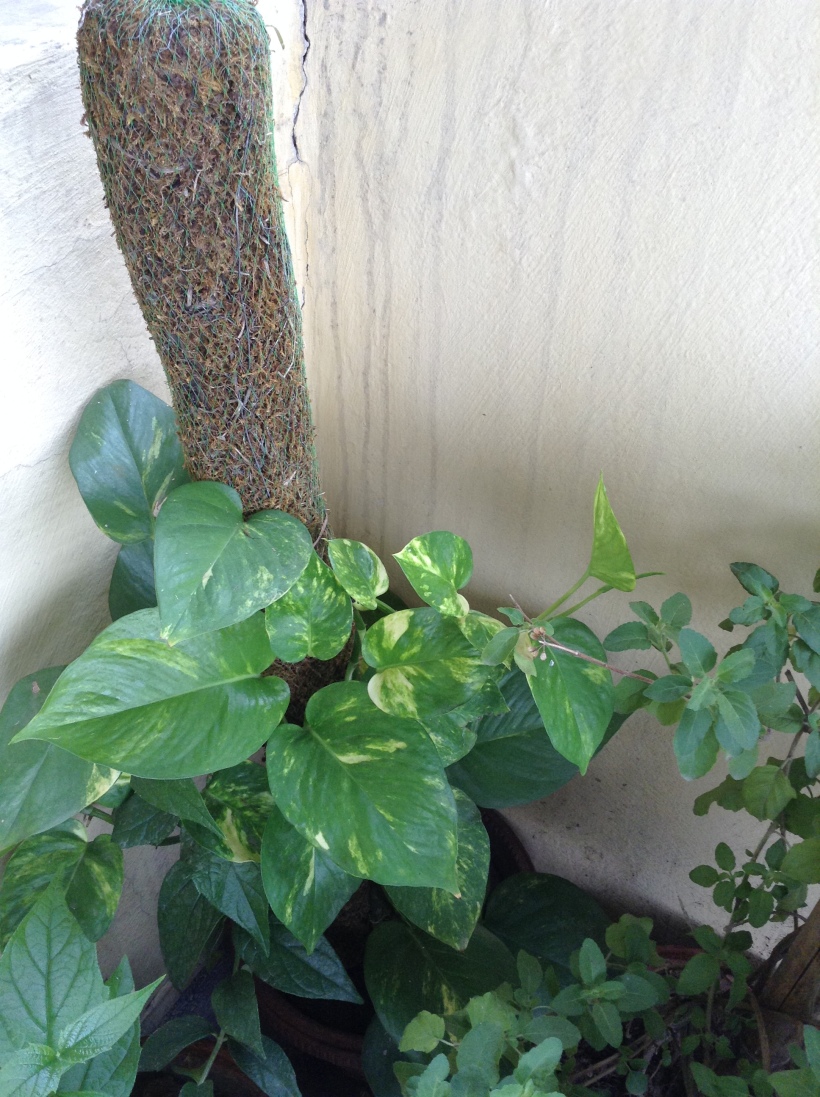
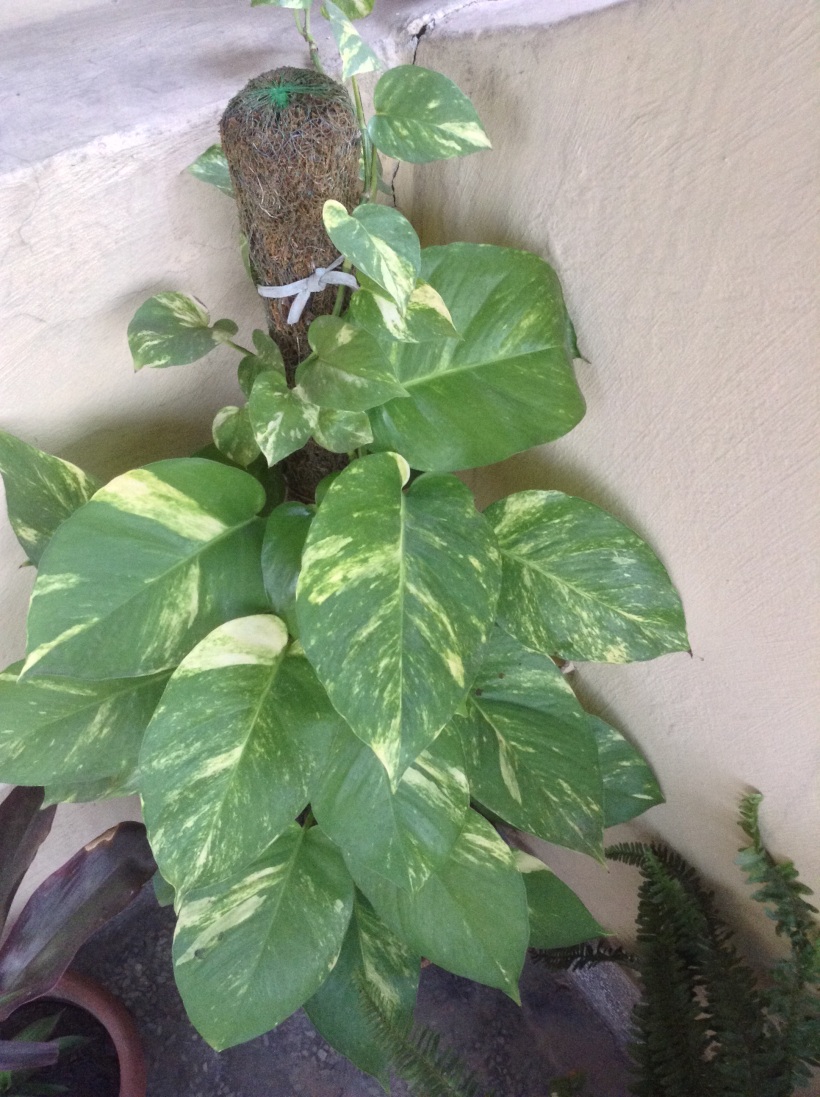
See how it has grown and covered the entire length of the moss stick and is reaching beyond it on the wall. A moss stick provides soil-like environment for all the roots shooting out of the body of the plant.
A Pothos or Money Plant grows very fast and is a beautiful sight to behold if maintained well. It does not complain with or without sun, with or without water. If you moisten the moss stick properly once, it will serve the plant well for about a week.
So just get a Pothos for yourself, provide it a moss stick and watch it return much more love than you give it 🙂
I hope this post has been of some use to you, I know that some of my friends needed such a post badly 😛 So go ahead, get the plants that suit you, shed those fears of killing plants and revel in praises from all and sundry on your beautiful garden 🙂 🙂
Let me know your views in the comments, and add any plants you think I missed out. I eagerly await your thoughts! Stay tuned to the blog, I have a lot of very interesting lined up for upcoming posts. Until we meet again! 🙂
One thought on “Five Plants for the Negligent Gardener”